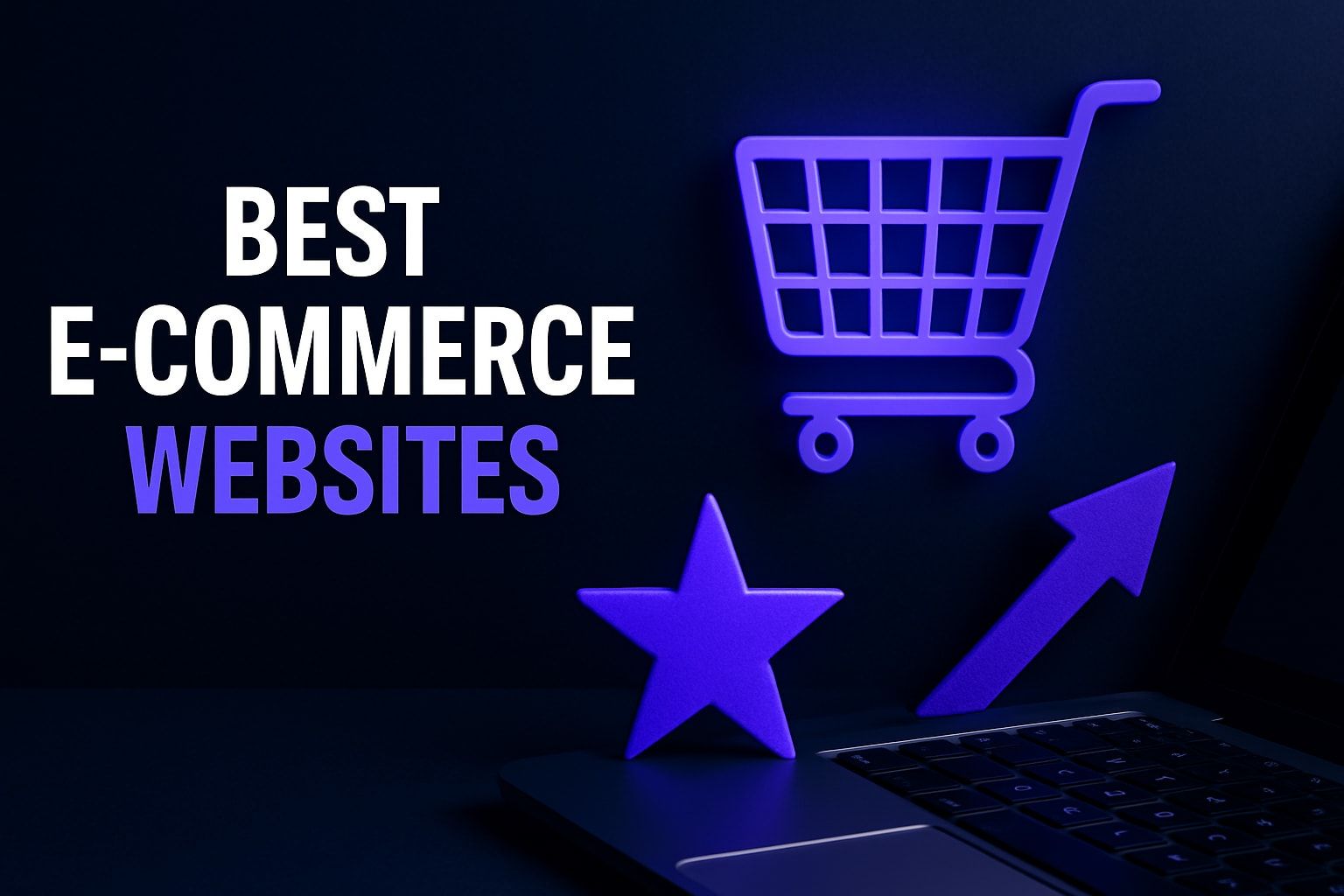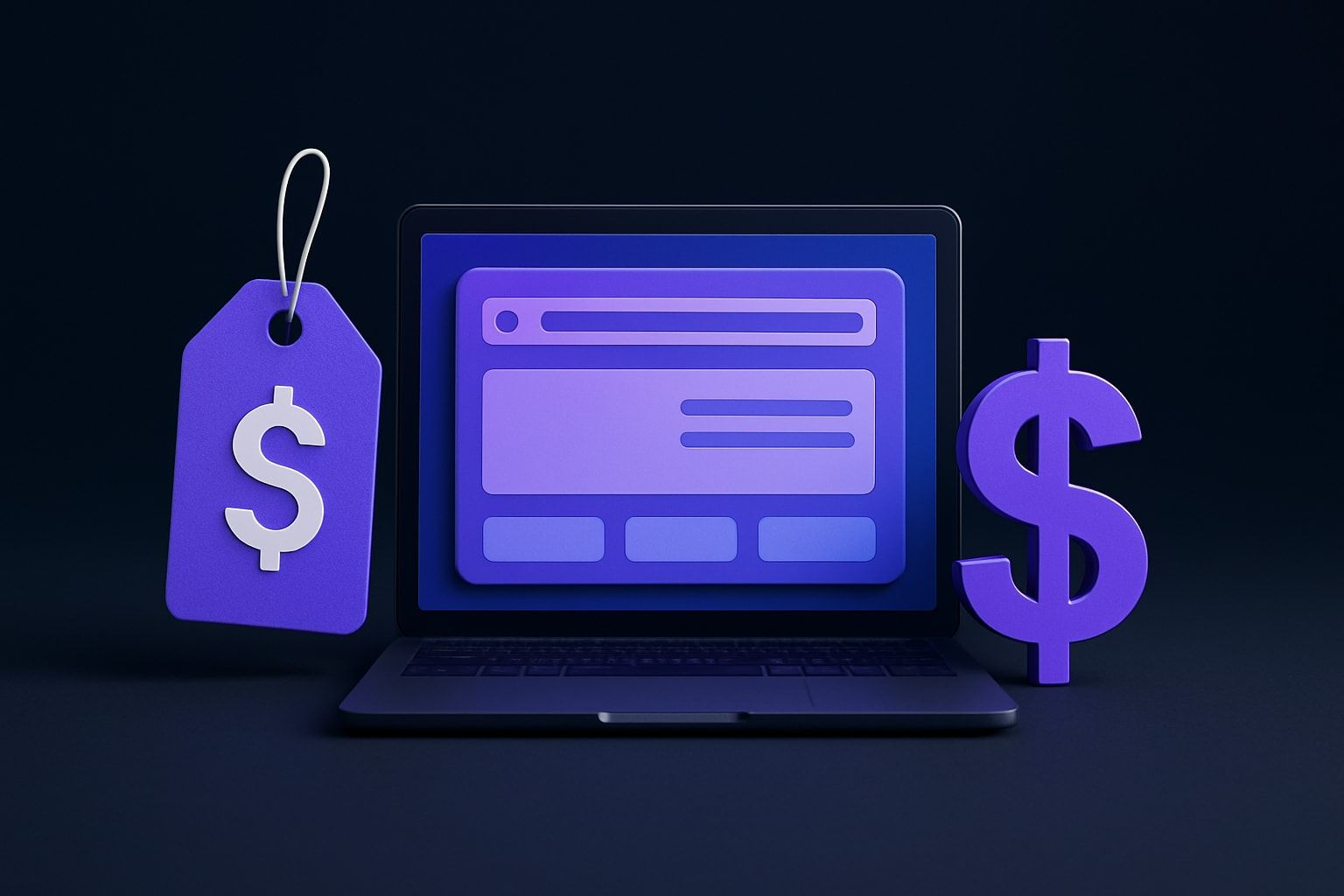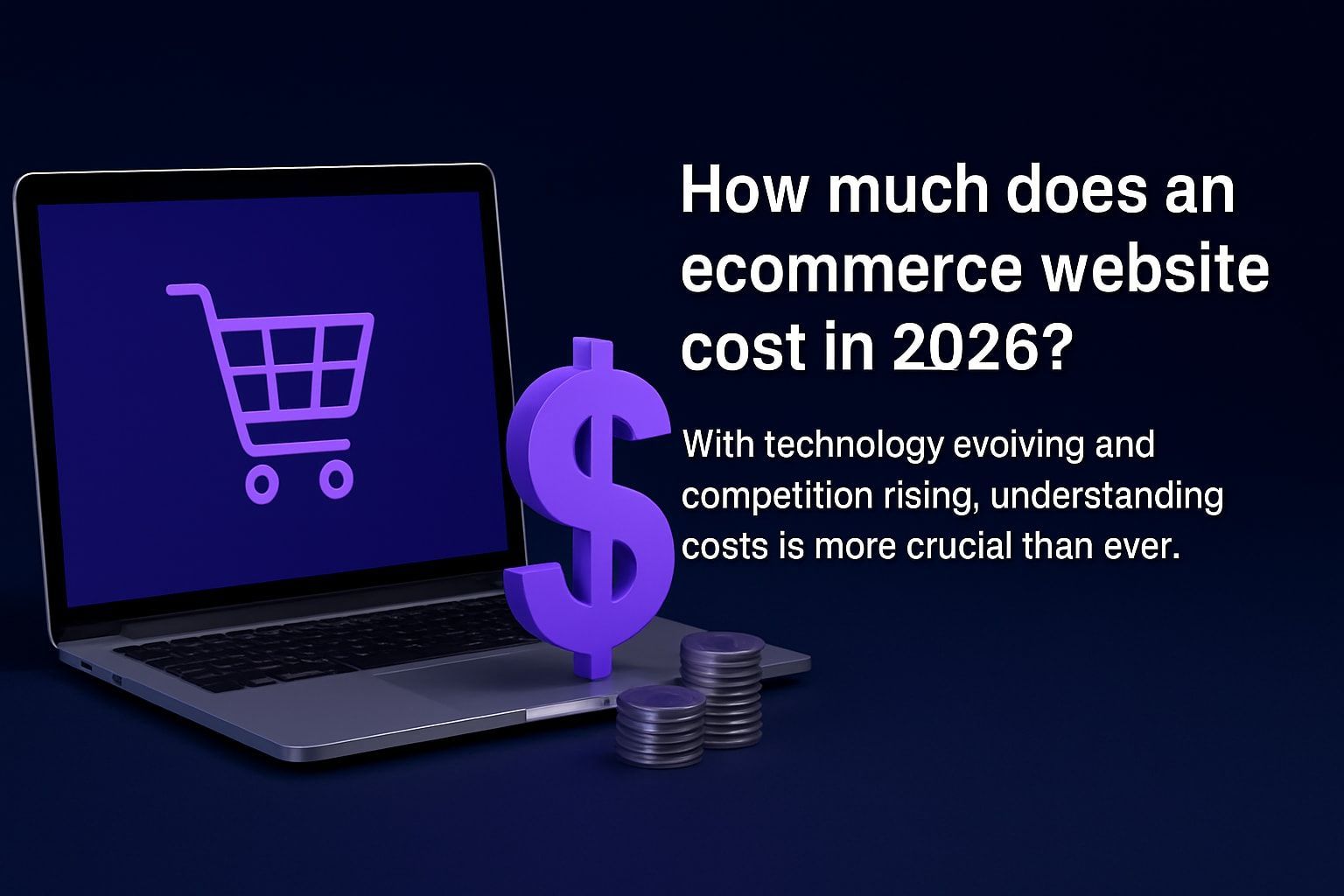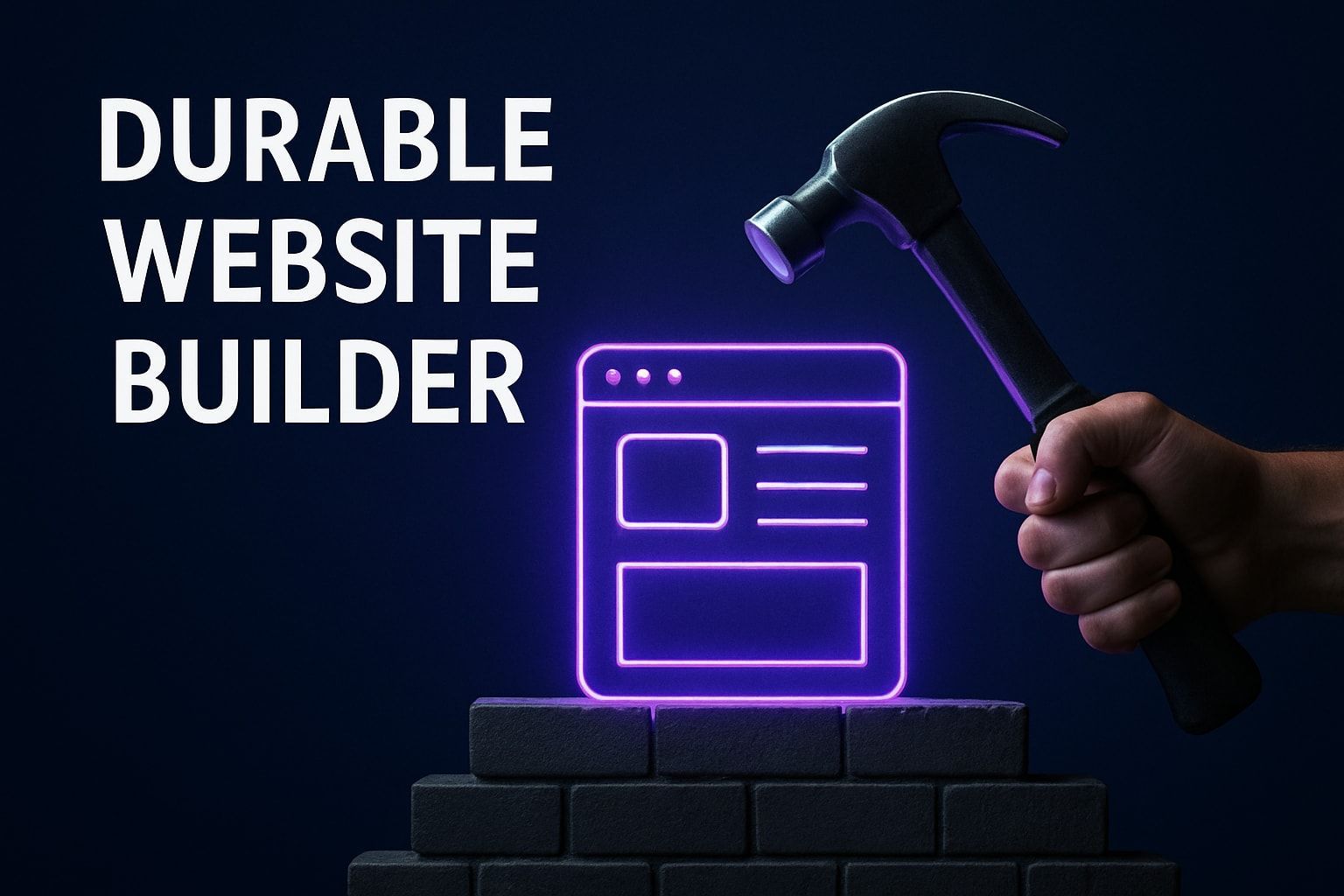12 Best Ecommerce Design Templates for 2025
In 2025, first impressions matter more than ever in online retail. The right ecommerce design templates can instantly boost your store’s credibility and directly impact your sales.
Choosing a powerful template isn’t just about looks—it sets the stage for trust, conversion, and growth. That’s why we’re reviewing the 12 best ecommerce design templates for 2025, with options tailored for every business size, style, and industry.
In this guide, you’ll discover standout features, pricing, usability tips, and who each template is best for. Ready to transform your online store? Let’s explore the top choices and find your perfect fit.
Why Ecommerce Design Templates Matter in 2025
The world of ecommerce is evolving at lightning speed. In 2025, online shopping isn’t just about having a website. It’s about delivering a seamless, mobile-first, and AI-powered experience that meets customers wherever they are.
Shoppers are more discerning than ever. According to recent research, 73% of online shoppers judge a business’s credibility based on its website design. A clunky, outdated site can turn customers away in seconds, while a sleek, modern storefront builds trust and encourages purchases.
The Time- and Cost-Saving Power of Templates
Building an ecommerce site from scratch can be overwhelming. Ecommerce design templates solve this problem by offering ready-made, professional layouts for businesses of all sizes. Instead of hiring developers or designers, brands can launch quickly with a polished look that reflects their identity.
Templates also reduce upfront costs. They come packed with built-in features—like payment gateways, product pages, and inventory management—so you don’t have to reinvent the wheel. For startups and small businesses, this means more budget for marketing and growth.
Optimizing for UX, CRO, and Performance
User experience (UX) and conversion rate optimization (CRO) are at the heart of ecommerce success. Well-designed templates guide shoppers smoothly from homepage to checkout, minimizing friction and abandoned carts. Responsive layouts adjust perfectly to any device, which is vital as mobile shopping continues its rapid rise.
Here’s a quick look at why these factors matter:
| Feature | Impact on Ecommerce |
|---|---|
| Mobile responsiveness | Increases sales by 30%+ |
| Fast-loading pages | Reduces bounce rates |
| Intuitive navigation | Boosts conversion rates |
| SEO-friendly structure | Improves search rankings |
Templates built for speed and search help your store stand out in crowded markets. In fact, ecommerce design templates that score high on Core Web Vitals and SEO deliver better visibility and a smoother customer journey.
Real-World Impact and 2025 Design Trends
Brands leveraging ecommerce design templates often scale faster. For example, startups that use pre-built themes can launch in days instead of months, focusing energy on sales and marketing rather than technical headaches.
The design trends shaping 2025 are clear: minimalism, bold typography, and interactive elements are dominating ecommerce. Templates that embrace these trends help businesses appear modern and credible from day one. For a deeper dive, check out Ecommerce Design Trends Boosting Conversions to see how top brands are turning design into profit.
In summary, ecommerce design templates are more than just a shortcut—they’re a strategic asset. They empower businesses to keep pace with technology, wow customers, and drive growth in a competitive landscape.
12 Best Ecommerce Design Templates for 2025
Finding the right ecommerce design templates can transform your online store’s performance in 2025. With so many options, it’s crucial to select templates that balance modern design, speed, and usability. Here’s a deep dive into the top 12 ecommerce design templates poised to elevate your business this year.
Avantiy Ecommerce Templates
Avantiy sets a new standard for ecommerce design templates in 2025. Their pricing structure is simple: build for free, then choose a plan when ready to publish. This approach is great for testing layouts before committing.
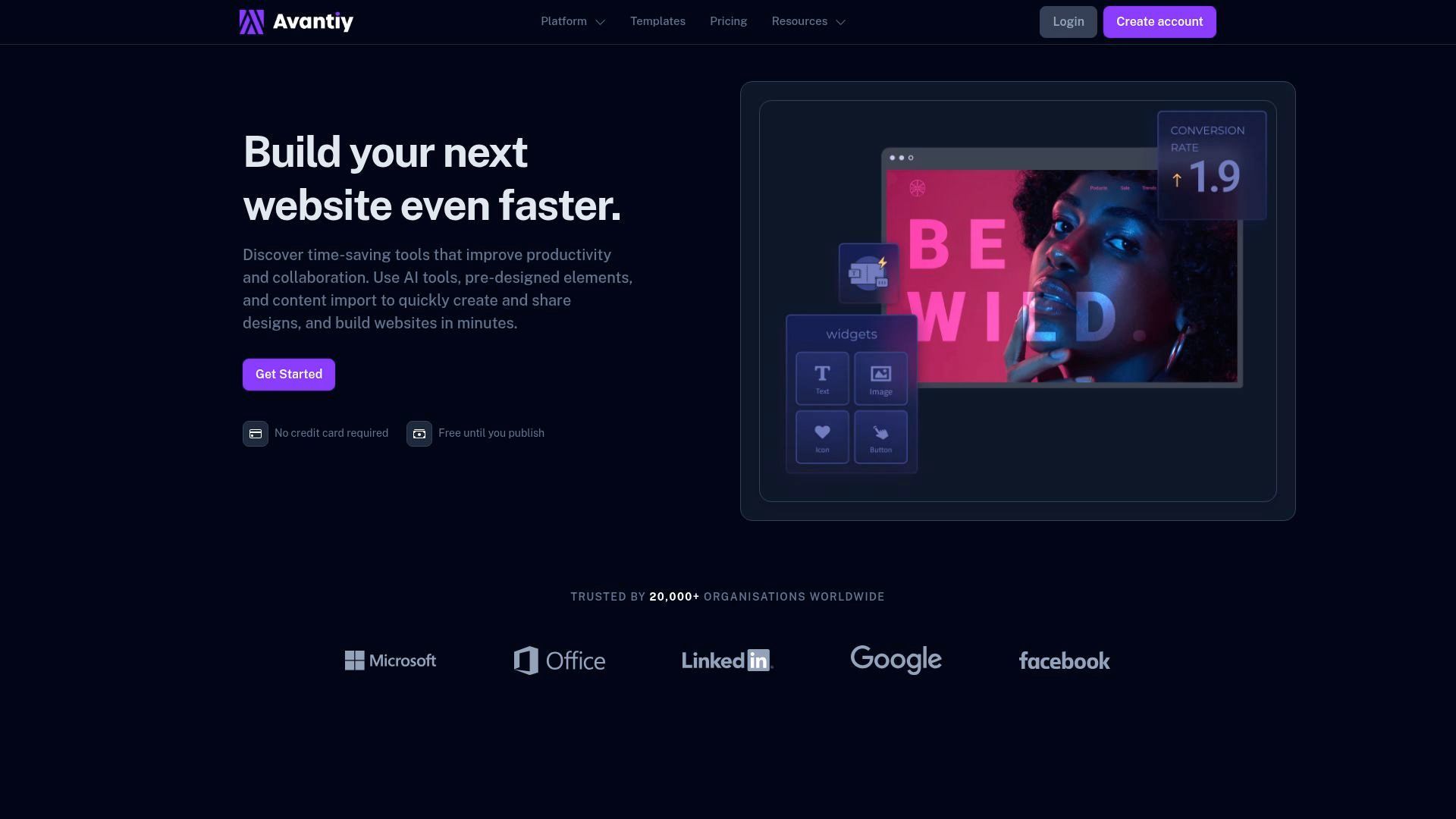
Core features include an AI-powered drag-and-drop builder, fully customizable templates, built-in SEO tools, dynamic content blocks, and over 400 integrations. As a result, you can launch a store rapidly and scale as you grow.
The standout benefits? High Core Web Vital scores for speed, seamless collaboration for teams, and no coding required. Avantiy is perfect for SMBs, startups, agencies, and entrepreneurs—even those with zero technical experience.
Pros:
- AI content assistant for fast site creation
- Cloud hosting and free SSL
- No coding needed
Cons:
- Full features unlock only after publishing
- Platform is newer to the market
Unique selling point: AI-driven productivity built into their ecommerce design templates. Want to explore more options? Check out Ecommerce website templates for the latest designs.
WoxStore Default (WooCommerce Theme)
WoxStore Default offers a versatile WooCommerce theme among ecommerce design templates, available in both free and premium versions. Its mobile-friendly layouts and deep WooCommerce integration make it a favorite for WordPress users.
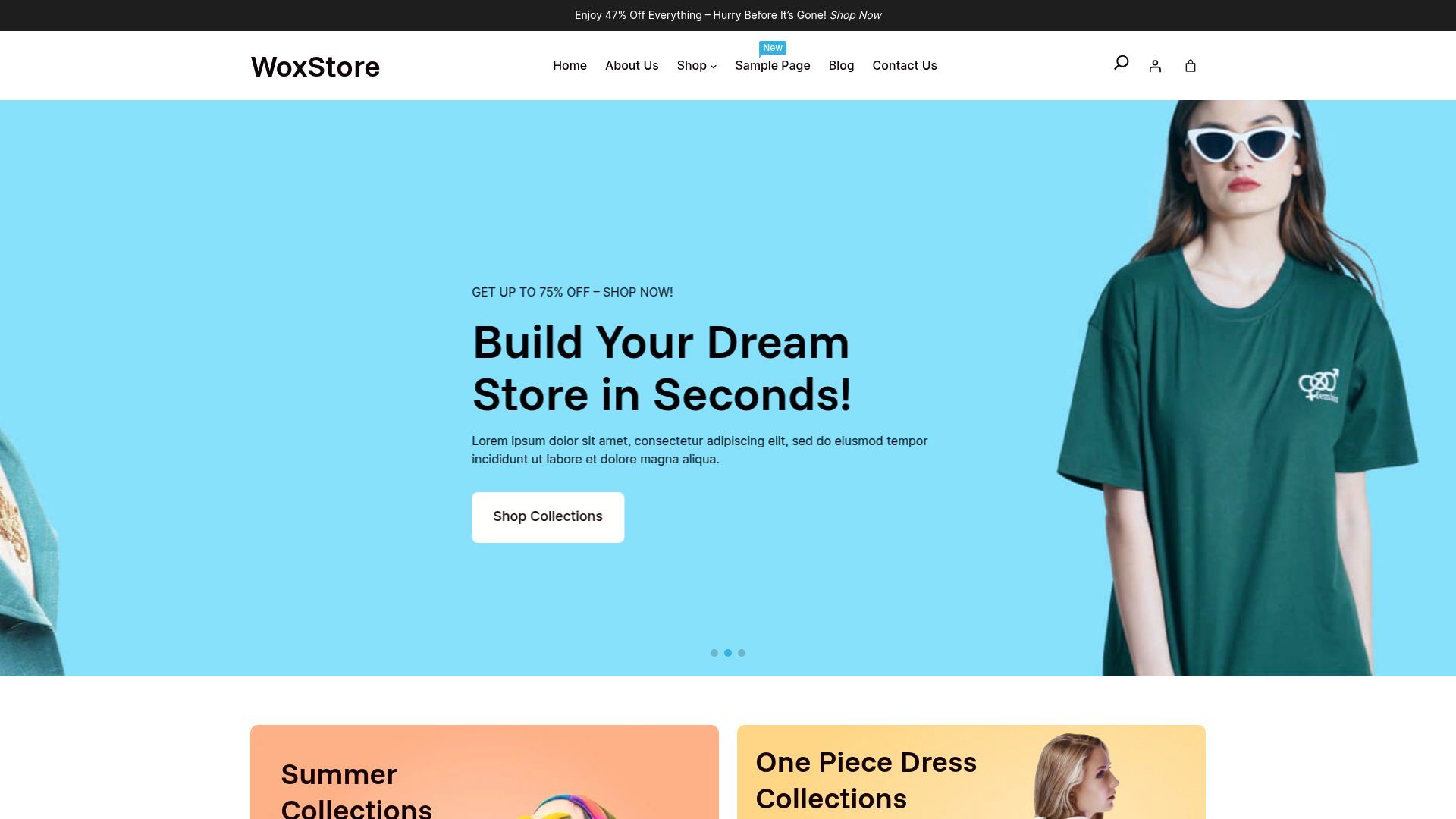
You get a fast setup, modern homepage designs, and multi-product support. The theme is compatible with a wide range of WordPress plugins, which boosts flexibility for small to medium retailers.
Pros include one-click import, extensive documentation, and reliable support. The main downside is that advanced features are limited in the free version.
If you need a store that adapts to various products and business types, WoxStore Default’s ecommerce design templates are a strong choice. It’s especially appealing for those who want to launch quickly without sacrificing quality.
E-commerce Website Template (Freebie) by Hamza Naeem
Designers and agencies seeking flexible ecommerce design templates will love this Figma community freebie. It features a clean, minimalist UI with a product gallery, shopping cart, and a seamless checkout flow.
Highly customizable, this template is perfect for prototyping and early-stage development. The only requirement is some Figma know-how, as it’s not a ready-to-use code solution.
Pros:
- 100% free and editable
- Modern, minimal aesthetics
Cons:
- Requires Figma skills
- Needs to be converted to code for live use
Unique selling point: These ecommerce design templates empower design teams to iterate and prototype at lightning speed, making it ideal for startups and client pitches.
Shopify's Dawn Theme – Online Store 2.0
Shopify’s Dawn Theme is the platform’s official showcase for modern ecommerce design templates. As the default for Online Store 2.0, it’s free and comes with flexible sections, optimized speed, and accessibility.
Key benefits include seamless Shopify integration, mobile-first design, and regular updates. The theme is scalable, making it suitable for DTC brands and dropshippers.
Pros:
- Strong community support
- Easy to customize
- Reliable performance
Cons:
- Less unique out-of-the-box
- Requires a Shopify subscription
Unique selling point: Backed by Shopify’s official support, these ecommerce design templates deliver best-in-class performance and peace of mind for merchants.
Storemate – Multipurpose Ecommerce Theme
Storemate brings a multipurpose approach to ecommerce design templates. It’s a premium theme, WooCommerce-ready, and comes with a drag-and-drop builder and built-in SEO.
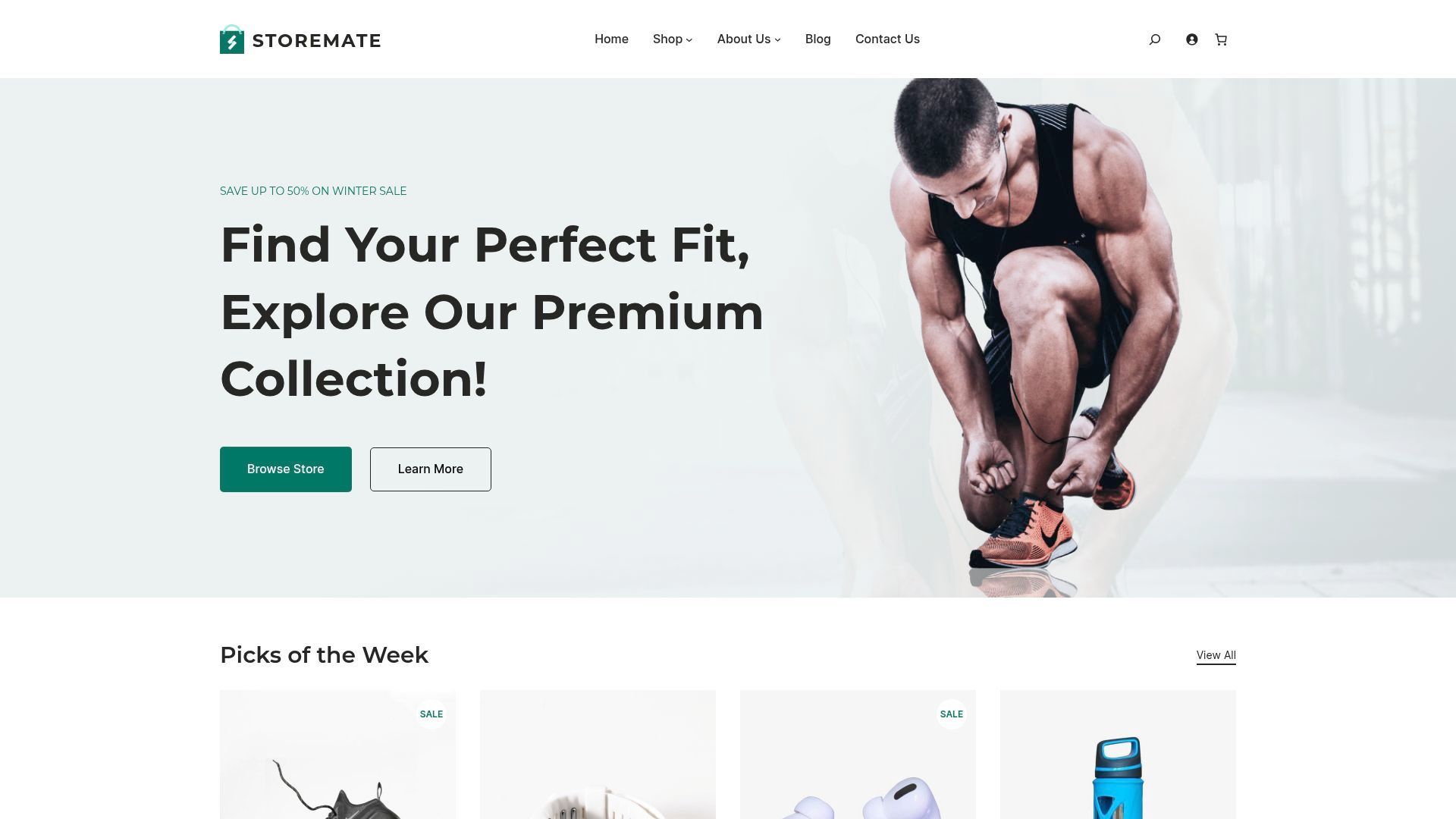
The standout feature is its wide range of demo layouts, which cater to fashion, electronics, home decor, and more. Storemate’s conversion-focused design ensures you’re not just looking good—you’re selling more.
Pros:
- Versatile for many industries
- Responsive and performance-focused
- Reliable support
Cons:
- Premium pricing
- Some learning curve for beginners
Unique selling point: Storemate’s all-in-one ecommerce design templates make it a top pick for stores aiming to expand into new verticals or niches.
Project - Ecom (An Ecommerce UI Kit)
If you want the building blocks for your next project, Project - Ecom offers a comprehensive Figma UI kit among ecommerce design templates. With 50+ screens, including product pages, shopping cart, and responsive layouts, it’s ideal for creating both web and app experiences.
The kit is flexible and free, making it a favorite with designers, agencies, and product teams. However, it’s not a direct website template—you’ll need to handle the design-to-code workflow.
Pros:
- Extensive components and screens
- Free to use
Cons:
- Not code-ready
- Requires design skills for adaptation
Unique selling point: This UI kit is a complete design system, letting you tailor ecommerce design templates to any brand or product vision.
Fashion & Clothing v2 (WoxStore Pro)
Fashion & Clothing v2 is tailored for apparel brands seeking specialized ecommerce design templates. This premium WooCommerce theme delivers a visually engaging layout, lookbook sections, and advanced product filtering.
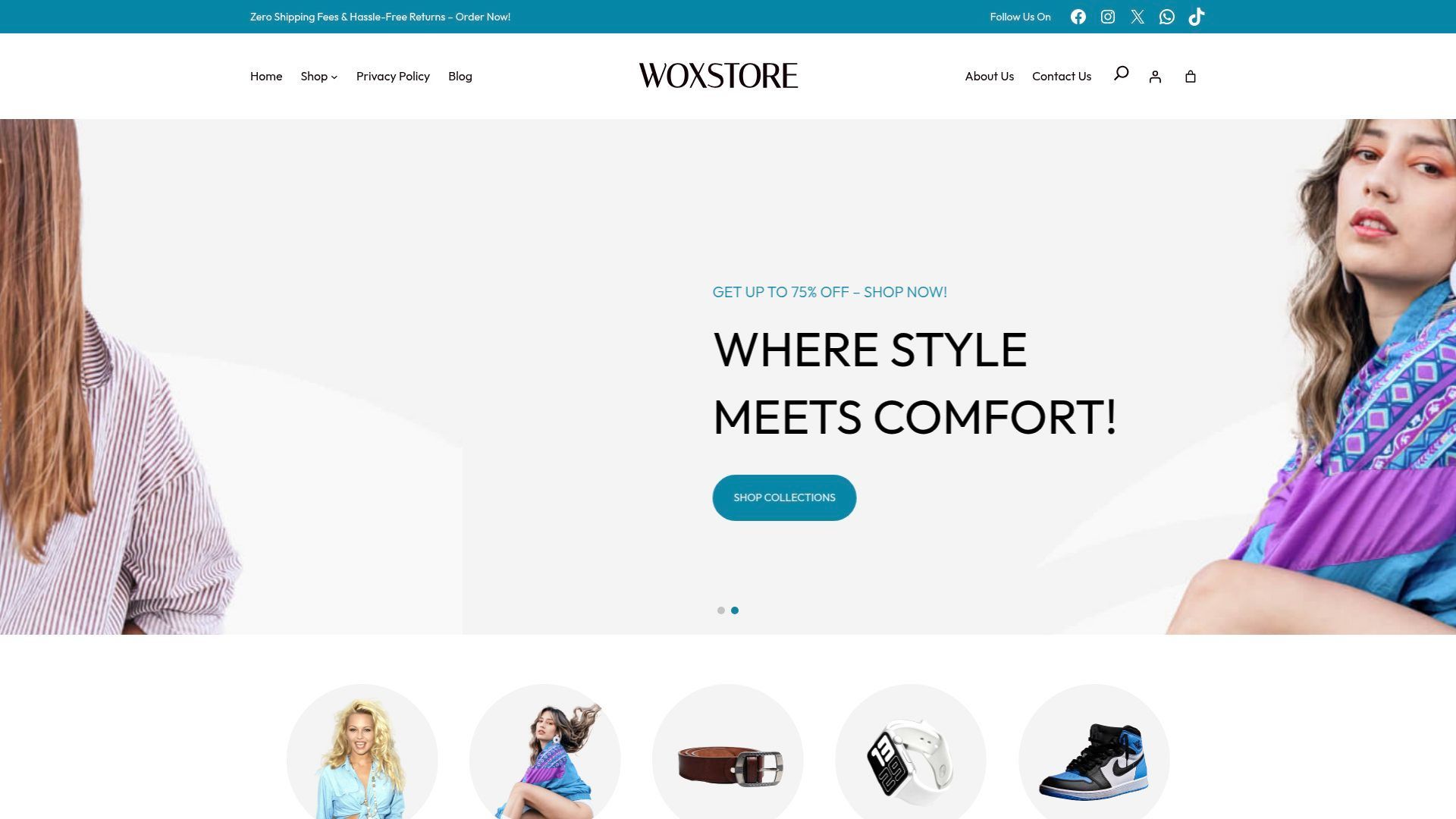
It’s easy to manage products and create a stunning online presence for clothing stores, boutiques, and fashion startups. The modern design resonates with style-conscious shoppers.
Pros:
- Niche-specific features
- Highly customizable
- Fashion-forward aesthetics
Cons:
- Premium only
- Requires WooCommerce knowledge
Unique selling point: These ecommerce design templates are crafted specifically for fashion, making them a go-to for brands wanting to stand out in a crowded market.
NFT Marketplace Template by Anima
NFT Marketplace Template by Anima brings Web3 innovation to ecommerce design templates. It’s a free Figma resource designed for NFT startups, digital artists, and agencies exploring crypto commerce.
Key features include NFT listing pages, wallet integration designs, and a bidding system UI. While it’s visually ready for blockchain projects, you’ll need custom development to enable full crypto functionality.
Pros:
- Modern Web3 aesthetics
- Easy to adapt for digital assets
- Free to use
Cons:
- Requires blockchain development
- Not plug-and-play for live sites
Unique selling point: These ecommerce design templates are perfect for launching next-generation NFT and digital asset marketplaces.
Electronics Store Website Template (FotaWP)
Electronics Store Website Template, powered by FotaWP, is designed for high-volume electronics retailers. It’s a premium WordPress theme with product-focused layouts, filterable categories, and fast-loading pages.
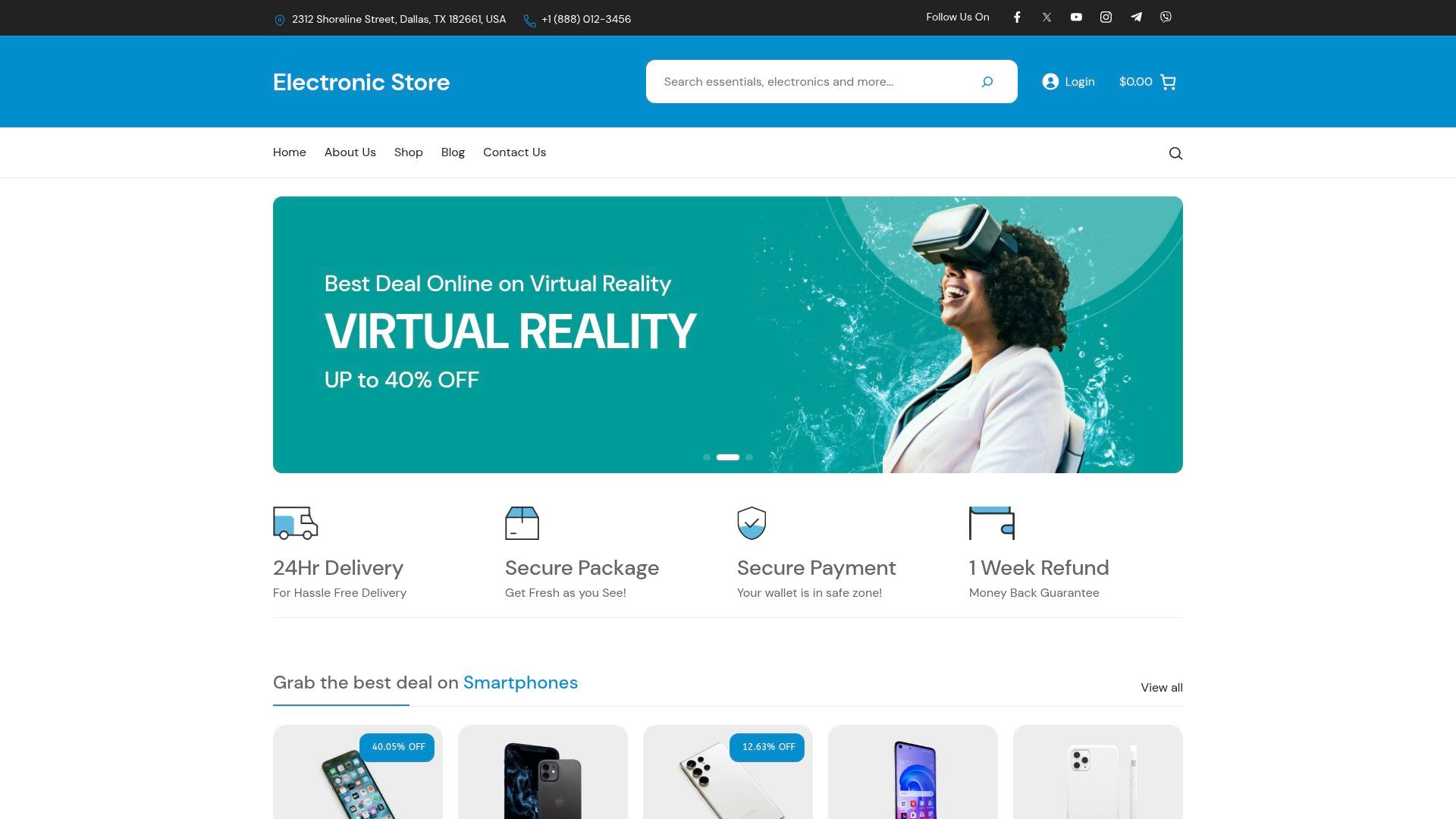
The template’s robust navigation and SEO-friendly structure make it ideal for gadget shops aiming to scale. It’s performance-oriented and built to handle large inventories.
Pros:
- Scalable for big stores
- SEO-friendly
- Optimized for speed
Cons:
- Premium only
- WordPress-centric
Unique selling point: Among ecommerce design templates, this one is built specifically to address the unique needs of electronics and tech retailers.
INWOOD – eCommerce Landing Page
INWOOD offers a beautifully crafted landing page for furniture brands in the ecommerce design templates landscape. It’s a free Figma template, focusing on product highlights and modern hero sections.
Perfect for single-product or niche furniture stores, INWOOD delivers a visually impactful experience that drives conversions. While limited to a landing page, it’s easy to customize and adapt for home brands.
Pros:
- Visually stunning
- Free and easy to edit
- High-conversion design
Cons:
- Only a landing page
- Not a complete website
Unique selling point: These ecommerce design templates excel at creating high-impact landers for furniture startups and DTC brands.
Decormate (Storemate Decor Demo)
Decormate stands out in the ecommerce design templates market for home decor and lifestyle products. This premium theme features decor-centric layouts, WooCommerce integration, and immersive product galleries.

It’s designed to showcase beautiful imagery and create an immersive shopping experience. While it may require some customization, it’s a top pick for home decor stores and artisans.
Pros:
- Gorgeous imagery and galleries
- Responsive design
- Easy product showcasing
Cons:
- Premium pricing
- May need tweaks for unique stores
Unique selling point: Decormate’s ecommerce design templates deliver an image-rich, engaging shopping journey ideal for lifestyle brands.
Cloth Store | Fashion Store | E commerce UI Kit
Rounding out our list, this Figma-based UI kit offers ecommerce design templates tailored for fashion and apparel. It includes product grids, cart and checkout screens, and layered components for easy customization.
It’s free and perfect for fashion designers, boutique owners, and agencies looking to streamline their prototyping process. The modern style and adaptability make it a favorite for quick turnarounds.
Pros:
- Specialized for fashion ecommerce
- Free and editable
- Modern, stylish layouts
Cons:
- Requires Figma
- Not ready for live deployment
Unique selling point: These ecommerce design templates provide a fast, flexible foundation for fashion and apparel projects, helping brands prototype and launch with confidence.
How to Choose the Right Ecommerce Template for Your Business
Selecting the right ecommerce design templates for your business can feel overwhelming, but breaking it down into clear steps makes the process easier. The right template acts as the digital storefront for your brand and can directly impact sales, customer trust, and long-term growth.
Match Your Brand Identity
Start by considering your brand’s personality. Do your ecommerce design templates reflect your values, colors, and tone? A tech retailer may want a sleek, minimalist look, while a boutique might prefer warm, inviting visuals.
- Review color schemes and typography
- Ensure visuals align with your target audience
- Preview template demos across devices
Evaluate Essential Features
Not all ecommerce design templates offer the same tools. Make a checklist of must-haves:
- Payment gateway compatibility
- Shipping and inventory management
- Product variation and category support
- SEO tools and analytics
Exploring a detailed Ecommerce solutions overview can help you understand which templates offer the right mix of features for your needs.
Scalability and Future-Proofing
Will your chosen ecommerce design templates grow with your business? Look for templates that support new product lines, seasonal campaigns, and integrations with marketing or CRM tools.
- Opt for flexible layouts and modular designs
- Confirm compatibility with popular plugins and updates
- Assess the vendor’s roadmap and support channels
Customer Journey and Mobile Optimization
A smooth customer journey is essential. Navigation, search, and checkout should be intuitive. Mobile optimization is a must, with over 60% of transactions now happening on smartphones.
- Test navigation and speed on mobile devices
- Check for responsive design and fast load times
- Ensure checkout is streamlined and secure
Free vs. Premium: ROI and Support
Free ecommerce design templates are budget-friendly but may lack advanced features or support. Premium options often provide enhanced customization, security, and dedicated help.
Quick Comparison Table
| Feature | Free Templates | Premium Templates |
|---|---|---|
| Customization | Limited | Extensive |
| Support | Community-based | Priority/Direct |
| Updates | Less frequent | Regular |
| Scalability | Basic | Advanced |
Real-World Scenario
Imagine a small boutique: they might prioritize visual storytelling and easy product updates. In contrast, a large electronics retailer will need robust filtering, bulk product uploads, and advanced analytics. Your choice of ecommerce design templates should address your specific business scale and growth plans.
Template Selection Checklist
- Does the template match your brand image?
- Are all necessary features included?
- Is it mobile- and SEO-optimized?
- Can it scale as you grow?
- What support does the vendor offer?
- Are there positive user reviews or case studies?
Taking a thoughtful, checklist-driven approach ensures your ecommerce design templates deliver both style and substance for your business goals.
Key Features to Look for in Modern Ecommerce Templates
Choosing the right ecommerce design templates is more than just picking something that looks good. The best templates combine aesthetics with robust functionality, ensuring your online store meets modern shopper expectations and stays competitive in 2025.
Mobile Responsiveness & Speed
Mobile shopping continues to surge, so ecommerce design templates must deliver seamless experiences on any device. Adaptive layouts ensure your store looks sharp on smartphones, tablets, and desktops.
Fast loading speeds are also essential. Templates optimized for Core Web Vitals not only improve user satisfaction but can boost your search rankings. For example, Avantiy and Shopify's Dawn Theme are known for their excellent performance on mobile, helping reduce bounce rates and drive conversions.
SEO & Marketing Integrations
Visibility is everything in ecommerce. The best ecommerce design templates come with built-in SEO optimization—think editable metadata, auto-generated sitemaps, and schema integration. These features help your products show up where shoppers are searching.
Look for templates with seamless integration to analytics and marketing tools, making it easier to track sales and launch campaigns. Some platforms, like Avantiy, go a step further by offering built-in SEO tools for ecommerce, letting you fine-tune every page for maximum discoverability.
Customization & Flexibility
Every brand is unique, so your template should be, too. Customization flexibility allows you to adjust colors, fonts, layouts, and widgets to match your brand identity.
Ecommerce design templates that support drag-and-drop builders or modular design systems make it simple—even for non-coders—to create a distinctive storefront. For instance, Storemate and WoxStore Default offer user-friendly customization while supporting a wide range of ecommerce niches.
Security & Support
Security is non-negotiable in ecommerce. Look for templates that include SSL certificates, GDPR compliance, and secure checkout processes to keep customer data safe.
Reliable support and thorough documentation are also crucial, especially if you’re not a tech expert. Templates like Shopify’s Dawn Theme and Storemate provide extensive resources and responsive support teams, so you’re never left in the dark.
Comparison Table: Features at a Glance
| Template | Mobile Responsive | SEO Tools | Customization | Security | Support |
|---|---|---|---|---|---|
| Avantiy | Yes | Advanced | High | Yes | Yes |
| WoxStore Default | Yes | Basic | Medium | Yes | Yes |
| Shopify Dawn | Yes | Advanced | Medium | Yes | Yes |
| Storemate | Yes | Advanced | High | Yes | Yes |
This table highlights how leading ecommerce design templates stack up on essential features.
Final Thoughts
In 2025, shoppers expect fast, secure, and visually stunning online experiences. By focusing on ecommerce design templates with mobile optimization, robust SEO, customization, and reliable support, you position your business for growth and credibility. Take the time to compare features and choose a template that can scale with your ambitions.
Future Trends in Ecommerce Website Design
The future of ecommerce design templates is evolving rapidly. In 2025, staying ahead means not just looking good, but also creating seamless, personalized, and engaging experiences. Modern ecommerce design templates are at the forefront of these changes, adapting to new technologies, consumer behaviors, and design philosophies.
AI-driven Personalization and Dynamic Content
AI is taking center stage in ecommerce design templates. With smart algorithms, stores can now display tailored product recommendations and dynamic content for every visitor. This creates a personalized journey that boosts engagement and conversion rates. AI-driven features also automate product tagging, chatbots, and even visual search. For deeper insights into how AI and personalization are shaping ecommerce, check out the Top Ecommerce Trends 2025.
Minimalist and Immersive Design
Minimalism continues to dominate, but now it's paired with immersive visuals and interactive elements. Clean layouts, bold typography, and whitespace help shoppers focus on products without distraction. High-quality product images, micro-animations, and subtle transitions draw users in and keep them engaged. For a closer look at these trends and their impact on ecommerce design templates, explore the Ecommerce Design Trends 2025 guide.
AR/VR Product Visualization
Augmented and virtual reality are changing how customers interact with products online. Modern ecommerce design templates are starting to integrate AR product previews, letting shoppers see items in their own space before buying. VR showrooms offer immersive experiences, especially for larger ticket items like furniture or electronics.
Voice Commerce and Conversational UI
Voice commerce is on the rise as more shoppers use smart speakers and voice assistants to search and shop. Ecommerce design templates are adapting by including voice search options and conversational UI elements. This makes the shopping process faster and more intuitive, especially on mobile devices.
Sustainability and Eco-friendly Design
Sustainability is no longer a buzzword—it's a buyer expectation. Ecommerce design templates are reflecting this with eco-conscious color schemes, digital badges, and storytelling sections that highlight ethical sourcing or carbon-neutral shipping. These touches build trust and align brands with modern consumer values.
Micro-interactions and Animation
Subtle animations and micro-interactions—like animated add-to-cart buttons or hover effects—make ecommerce sites feel lively and interactive. They guide users, reward clicks, and reduce bounce rates. When thoughtfully applied, these features enhance usability without slowing down the site.
Case Study: Adapting to New Trends
Brands embracing these trends are seeing measurable results. For example, stores leveraging AR previews and AI-driven recommendations with ecommerce design templates have reported higher conversion rates and longer average session times. Staying agile and updating templates ensures your store meets customer expectations and stands out in a crowded market.
Looking ahead, the best ecommerce design templates will balance innovation with usability. By adopting these future trends, your business can deliver memorable, high-converting shopping experiences that keep customers coming back.
Ready to put these cutting-edge ecommerce design ideas into action? Whether you’re just starting out or looking to upgrade your online store for 2025, the right template can make all the difference—saving you time, boosting your brand, and helping you reach more customers. With Avantiy’s AI-powered website builder, you don’t need any coding skills to create a beautiful, high-performing store that stands out and ranks well in search. Why not explore the best templates and see how easy building your dream ecommerce site can be?
Get Started for Free
Start building your new website today
No credit of debit card required start building today

